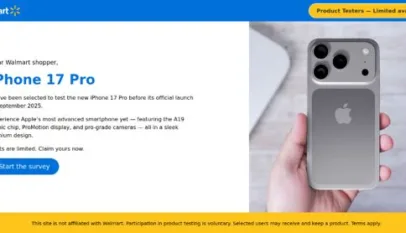
Windows 11 is the latest version of Windows, and it is known as the “best” Windows version released. Though according to many critiques, the similarities between Windows 10 and 11 are uncanny. We’ve compared Windows 11 and Windows 10 and let you decide whether it is worth upgrading the OS.
The biggest stink made by Windows commentators at the launch of Windows 11 concerned its new hardware requirements. The need for a TPM security chip got a lot of digital ink, while in my experience, the more widespread barrier to upgrading was a requirement for a more recent CPU.
When tested three or four PCs all had TPM chips, but with CPUs that weren’t recent enough for the upgrade. You also can’t install the OS in the unlikely event that your PC still runs a 32-bit processor; it only runs on 64-bit Intel/AMD and Arm chips.
The next thing is that Windows 10 lets you show wider, more informative taskbar buttons and lets you place the taskbar on the side or the top of the screen as well as across the bottom, a big deal to some users while Windows 11 does neither.
In 10, the entries are always in the same place. But in 11, if you use the default center alignment, the icon positions, even the Start button, change as you open and close apps. Luckily, you can left-align the taskbar in Windows 11, which solves that last issue, but the others remain.
The app stores in Windows 11 and Windows 10 are based on the same design. Yet, Windows 11’s app store brings support for Android apps via the Amazon Appstore. Only select Android apps are supported, so make sure to read our guide on how to install Android apps on Windows 11.
Over Windows 10, Microsoft includes more app types outside of the Universal Windows Platform (UWP) in Windows 11. You still have access to UWP, but now also Win32 apps like Firefox and the Epic Games Store.
If you want the best Windows OS for gaming, Windows 11 is for you. Recent Windows 11 updates included optimizations for running games in windowed mode, and it supports features like Auto HDR and DirectStorage — an upcoming feature that helps games load in less than one second.
Some of these features, like DirectStorage, are available on Windows 10 as well. Microsoft has made it clear that gaming is a big focus for Windows 11, so it’s the better platform for gamers now, especially with some of the performance bugs worked out. PC gamers are updating to Windows 11 in droves, so that’s a good sign.
Microsoft confirmed that the 2022 Windows 11 update had some issues with gaming, particularly with Nvidia GPUs. This issue has since been resolved, so if you’ve been holding off on updating, you’re free to do so now without any performance drops.
As with all major OS updates, some features come, and some features go. The biggest ones to leave Windows in version 11 are the Timeline, Live Tiles, and Internet Explorer. If you run an old business application that requires IE, however, you can still run Internet Explorer mode within the Microsoft Edge browser. The Timeline, however, is now relegated to the mists of times past. I don’t use it a lot, but find it useful on occasion.
On the other hand, there are some benefits of upgrading to Windows 11 s well, such as in Windows 10, the framerate drops to 35-38fps. Windows 11 on the other hand gives 60fps. The big difference between these Windows versions is the number of background processes they run and how they handle them.
Windows 10 has a bunch of extra background apps, including apps like OneDrive and skype running by default. In Windows 11, there are fewer background apps/processes running by default, and its resource allocation algorithm is updated to prioritize foreground apps.
If your PC has less RAM and CPU power, then Windows 11 will definitely offer better performance as it focuses on the foreground apps and has fewer background processes consuming limited resources.
















































